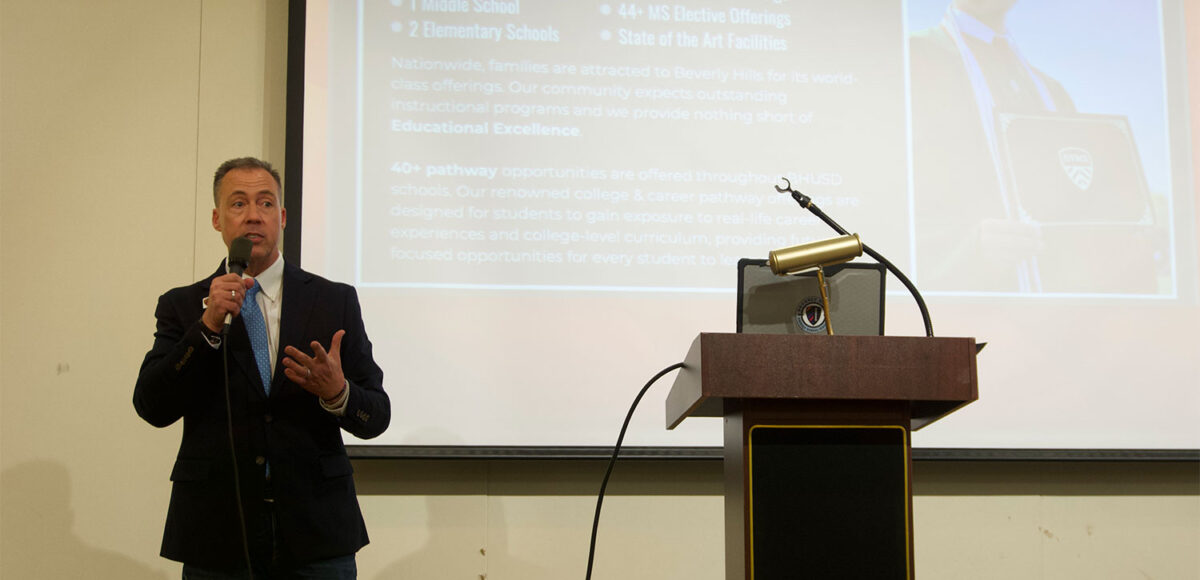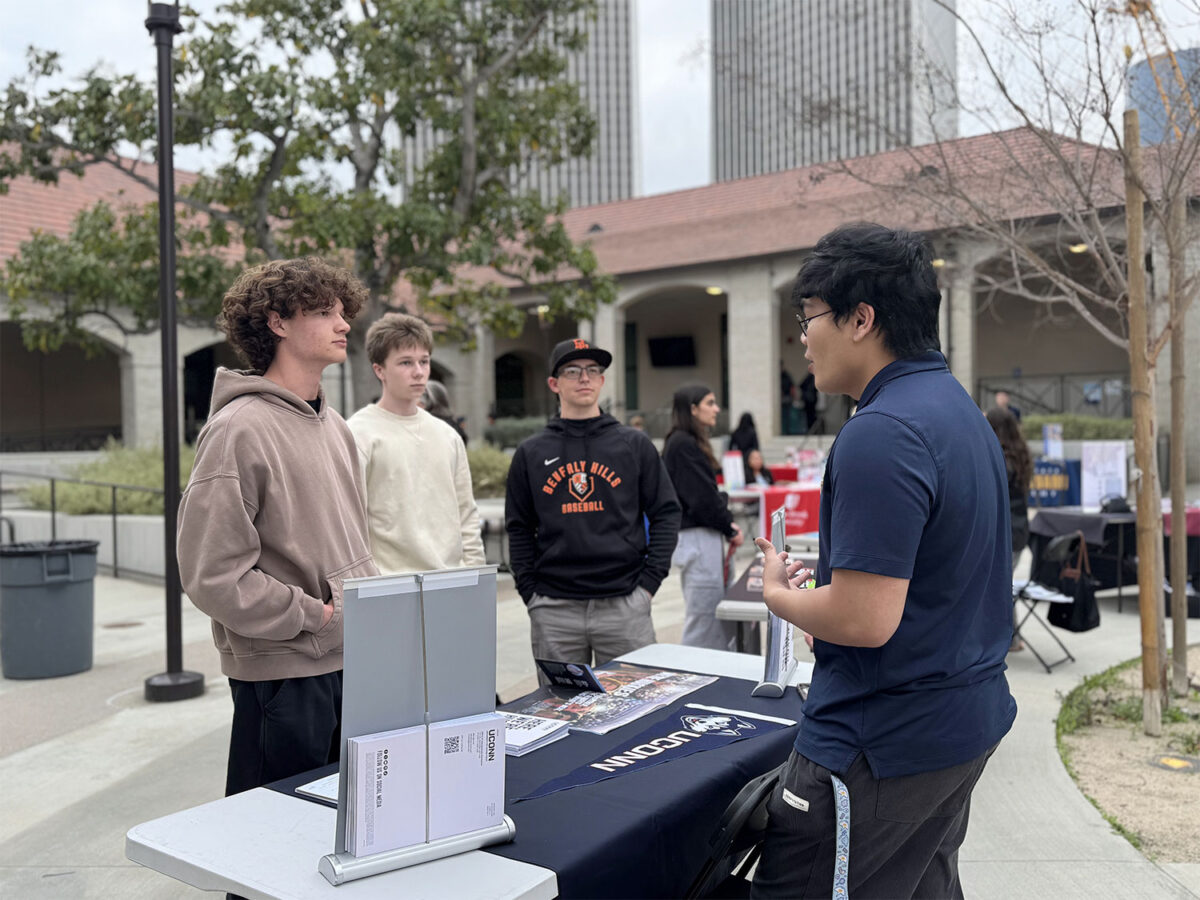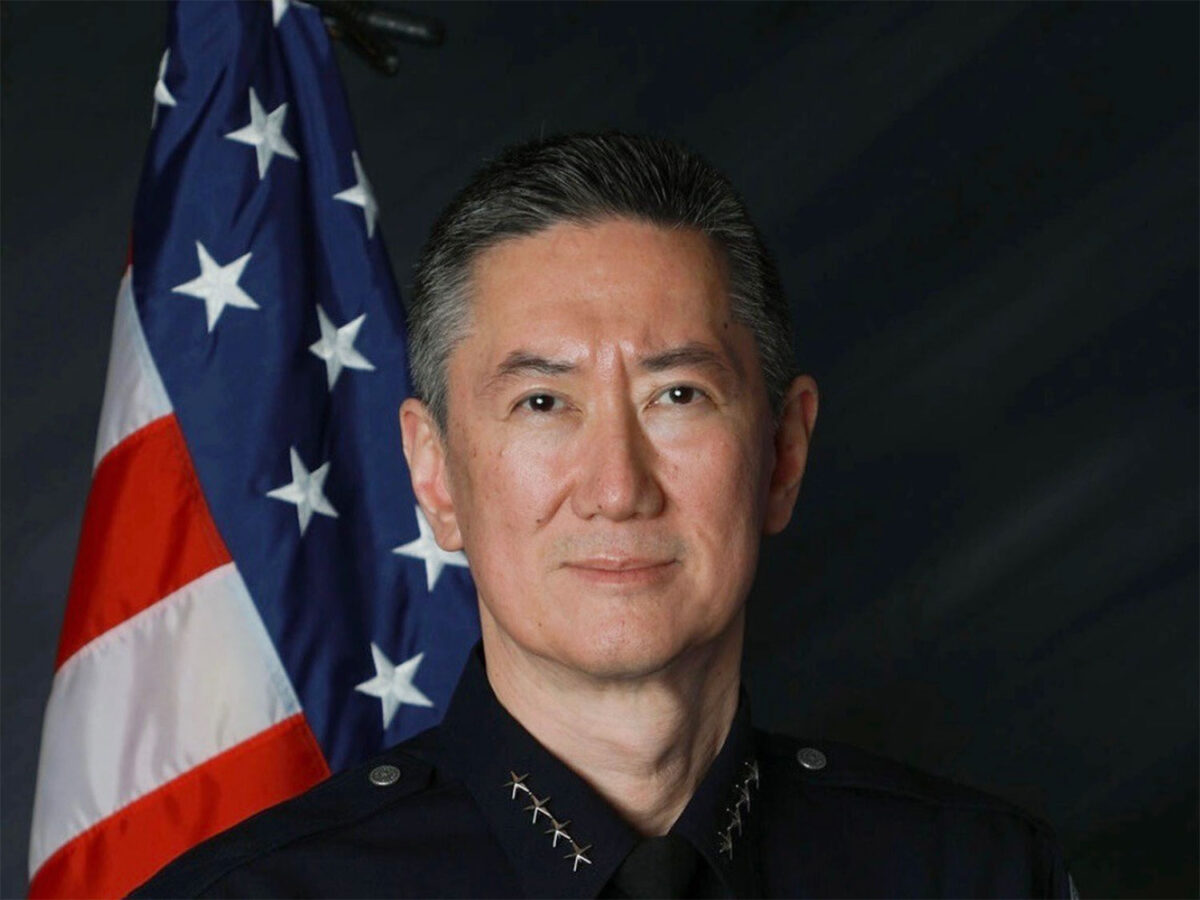The Municipal League of Beverly Hills held a town hall on June 12 to recruit new members and discuss current happenings within the city. The annual general membership meeting took place at the Roxbury Park Community Center and welcomed guest speakers from the Beverly Hills Unified School District (BHUSD), the Beverly Hills Police Department (BHPD) and City Council. Members of the community gathered in conversation about law enforcement, academics and building development.
The Municipal League is a nonprofit that was founded in 1962. It is composed of Beverly Hills residents who want to be more involved in city government and advocate for public interest issues.
The evening’s meeting began with a discussion of current and former proposed development in the city. Municipal League Chairman Thomas White boasted about the group’s most recent win in stopping the Cheval Blanc Hotel project. According to White, the group successfully raised money and urged people in the community to vote against the construction of the nine-story hotel on Beverly Hills’ world-famous Rodeo Drive, ultimately resulting in the cancellation of the project.
When the league was first formed, 62 years ago, by former mayors and by community leaders, they had a very important mission. Even in those early days, the founders understood the critical importance of maintaining our residential quality of life,” said White. “Why? Because it is the foundation for our entire economic system. People come to Beverly Hills not because there are hotels here or more hotels to come. They come to Beverly Hills because of the quality, the elegance, the style, the celebrity.”
The current members of the Municipal League were all in agreement that the city should prioritize the preservation of single-family homes before building upwards like close neighbors Century City and West Hollywood.
Councilmember Craig Corman, a former Planning Commissioner, spoke about his experience approving new construction. “I always felt that preserving quality of life really meant preserving things we like and reasonably expect to continue to be there,” he said, explaining that he wants to maintain the current architectural landscape of Beverly Hills.
Corman addressed the topic of builder’s remedy projects. “I know that there are a lot of people who are concerned about projects,” said Corman. “I’ve had phone calls and emails from people about projects in their neighborhoods in the last two months since I took office.”
Corman also addressed the topic of the Regional Housing Needs Assessment (RHNA) numbers, which require the city to plan for more than 3,000 new units in its Housing Element.
“From my perspective, we will use whatever legal means we can to vet these projects,” he said. “When people propose these projects, we will vet them according to law, and we’ll make sure that they follow all the laws, and we will process all these projects according to the laws. We have not processed many of these projects so far.”
On the other hand, the city has shown itself to be adept at modernizing historical buildings, especially those that benefit students. Beverly Hills Unified School District Superintendent Dr. Michael Bregy spoke about construction updates.
El Rodeo Elementary School, which will host its grand reopening in August, will be open for public tours in July. As the Courier has reported, the campus’ transformation combines historical remnants of the school’s architecture with updated classrooms that will make learning more efficient. Bregy also announced the construction of an updated Konheim Athletic Building at Beverly Hills High School. The current building will be knocked down and a new building, including state-of-the-art athletic facilities and an Olympic-sized outdoor pool, will take its place in 2026.
“We’re building for the next generation of students,” said Bregy.
The district has also been updating its approach to student safety. “We have a command center that acts just like that real time watch center that Chief Stainbrook has put into place,” said Bregy. “And we modeled ourselves after what’s happening in the city with increased security at our schools. We have armed security at each of our schools because that, we thought, was necessary. You can’t have positive teaching and learning in an environment where you feel safe if you don’t have the proper security.”
The police department has also made improvements in officer safety. So far this year, crime rates are down 15% from last year and arrests are up about 30%, according to BHPD Chief Mark Stainbrook. At the meeting, he discussed how drones have been at the forefront of law enforcement technology and even revealed crime scene footage from drones.
This technology has made the community safer, said Stainbrook.
It can also be used to locate victims who are in danger. “If you call 911 right now, we would geolocate your phone to where you are and immediately put cameras and drones where you are and then direct officers to your location,” explained Stainbrook. “So, our response is very fast to getting to the victim of a crime and then getting to the suspect of the crime.”
When residents at the meeting asked Stainbrook about challenges he faces in the community, he turned the conversation around, explaining that technology and resources cost money that comes from the revenue hotels and tourists bring into the city. Recently, revenue has gone down and the police budget has decreased from previous years. “The budget’s rough for the next five years,” he said. “I don’t care if it’s Beverly Hills or not. This technology costs money. It’s very expensive to train and pay police officers. And the revenue for the city is going down and has gone down. So, our budget projections are not good. I’m being asked to cut for next year. I want to expand the drones. I want to fly a drone 24/7 because they’re so effective, but you have to have the revenue coming in the city and it may not be popular with this group, but most of the revenue is brought in by businesses and people that stay in the hotels.”
He also pointed to the state legislature, explaining that there are not enough laws in place to keep criminals off of the streets. Many of the arrests he makes are not first-time arrests and people who commit crimes come back to do the same things after they’re released from prison.
“I think all chiefs want to be compassionate towards someone who’s mentally ill or has drug or alcohol addiction, or is committing crime mainly due to those things, but they probably need enforced treatment,” Stainbrook said. “Either you’re going to go to jail or you’re going to get treatment. You’re not going to just be able to get back out and keep doing what you’re doing. But, where we’re really having a problem is literally career criminals, career gang members who come in and steal and rob people and burglarize over and over and over again.”
According to his statistics, 80% of crime is in the Golden Triangle, with high rates along busy streets such as La Cienega Boulevard, Robertson Boulevard and Beverly Drive. As summer approaches and more people enter the city, he urges members of the community to stay safe by locking doors and not leaving valuables in cars. “Just simple things like that will help reduce crime,” Stainbrook said.







